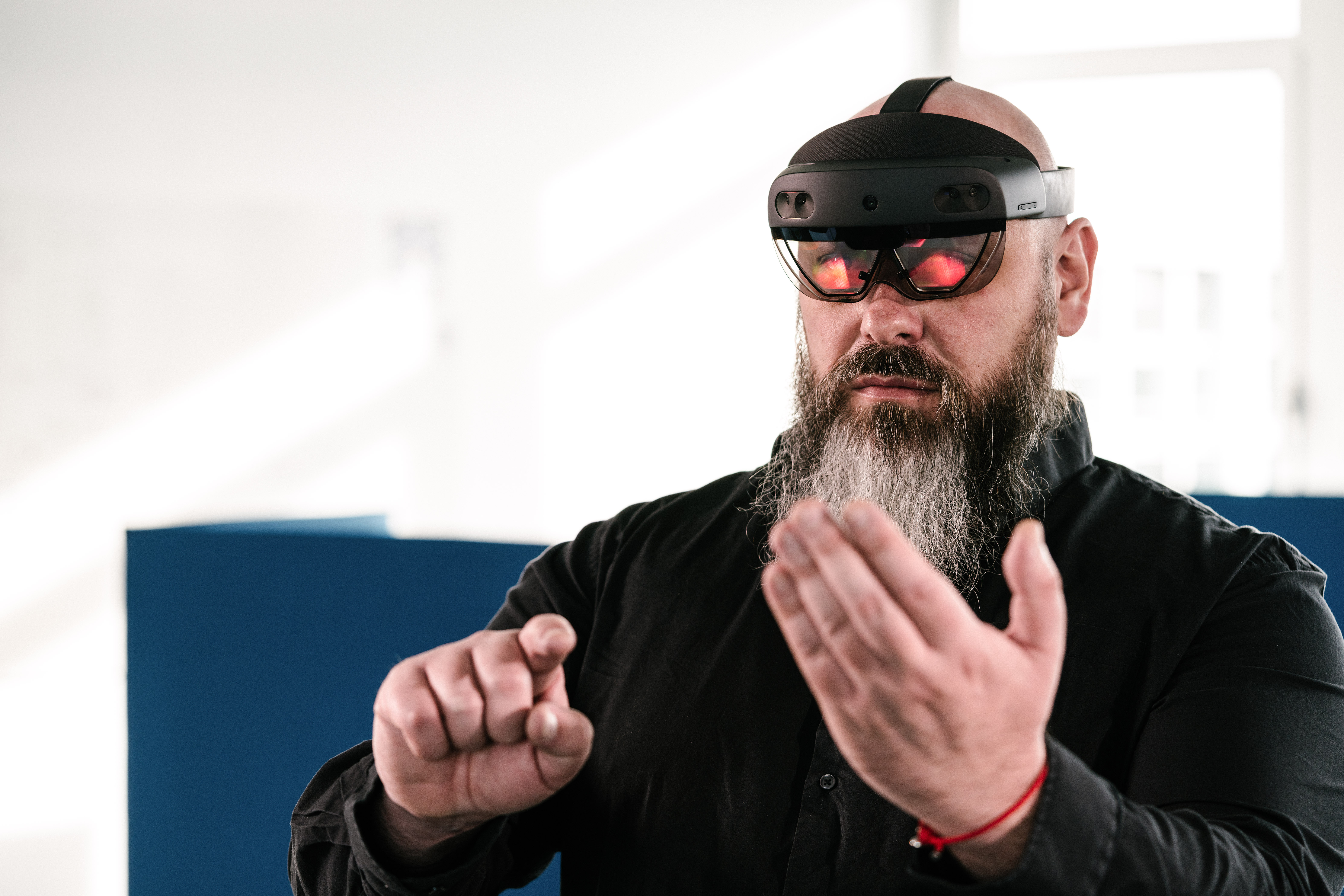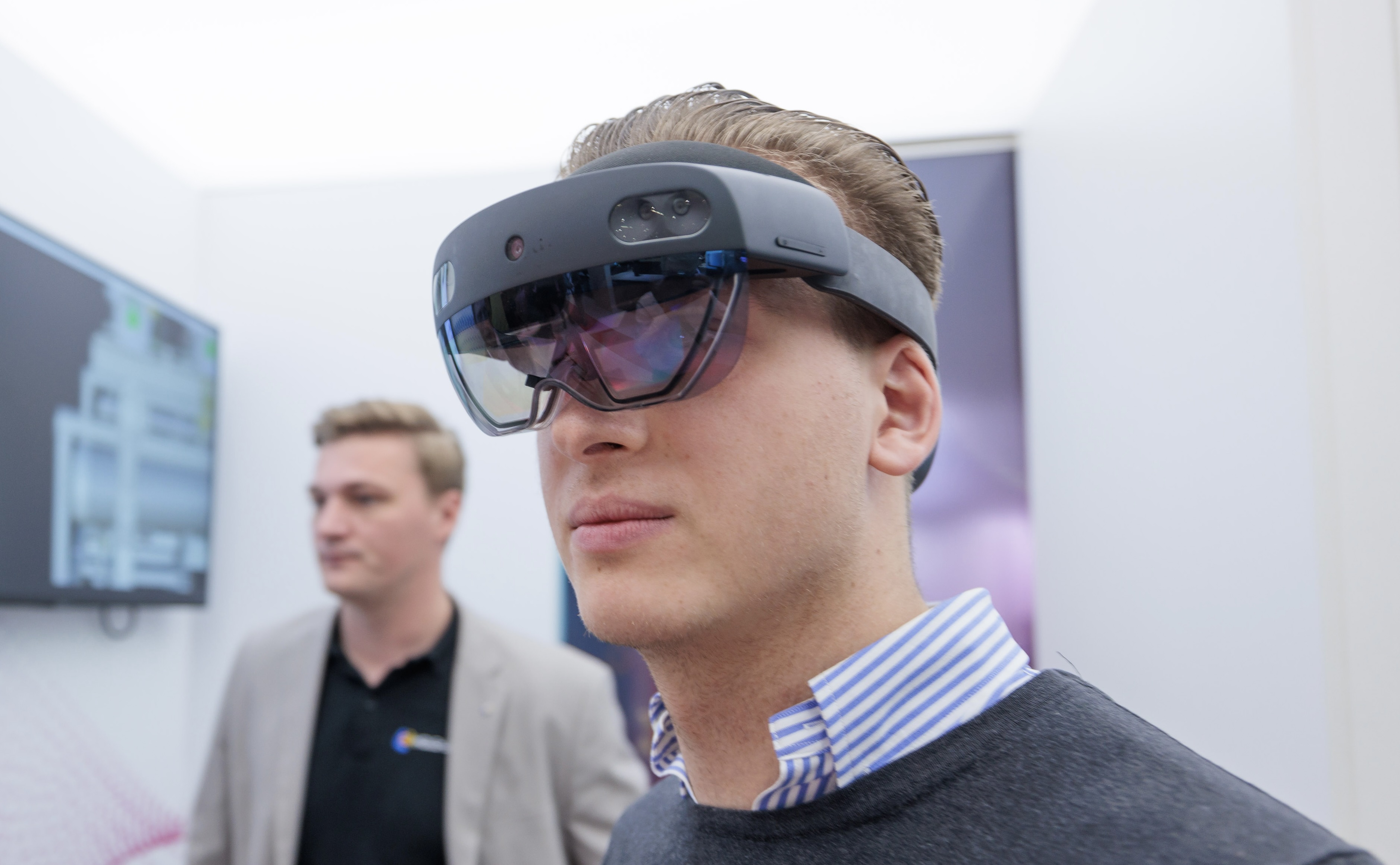ENGIE Refrigeration, a global specialist in products, solutions and services for economic and energy efficient refrigeration and heat generation, uses Holo-Light’s Augmented Reality Engineering Space AR 3S to create efficient workflows and facilitate machine design.
ENGIE Refrigeration was looking for a way to better visualize and coordinate work steps in real time to reduce iterations in product development. The company needed a convenient and easy-to-use solution to visualize large and complex machines in detail and in 3D without time-consuming data preparation or conversion. To meet these challenges, Jörn Stiegelmeier, Head of Technology & Development, first came up with the idea of using AR glasses in 2017, at a time when AR in the refrigeration and heating industry was still a vision of the future. Today, the company is a global pioneer in the industry when it comes to AR.
AR Tailored to the Use Case
AR headsets and the according applications augment the real world with digital content ranging from information and animations to complex 3D models. They allow users to interact with this content using hand recognition sensors and to overlay it on the physical world – all while still perceiving their environment with all their senses.
To get the right AR application for their needs, ENGIE Refrigeration partnered with XR expert Holo-Light and is now using Holo-Light’s Augmented Reality Engineering Space AR 3S. “The cooperation with Holo-Light is always constructive, friendly, and goal-oriented. My ideas are well received, and the team considers and implements them according to our individual requirements,” says Stiegelmeier.
Improving Workflows With AR 3S
AR 3S makes complex work processes along the value chain, such as machine design, significantly more efficient. The application allows users to visualize models, such as prototypes, as 3D holograms that are seamlessly generated from the original CAD file without the need to modify the data.
ENGIE Refrigeration is using Microsoft HoloLens 2 as the end device for the application. AR 3S allows the models to be displayed at their actual size and with the same level of detail as the CAD file. Engineers, technicians, and anyone involved in the workflow can get a detailed 3D view of the external and internal structure of the object. They can extract individual components from the full-scale model, use x-ray mode and other features to gain greater insight, take measurements, and make annotations. In multi-user sessions, they can collaborate with others on the same model in real time, regardless of location.
Visualization and collaboration via AR 3S improve understanding of the object or machine, reveal new opportunities for optimization, and reduce development loops. Engineers can identify potential weaknesses early in the product development and design process and eliminate them faster.
Jörn Stiegelmeier is convinced of the benefits of the application: “Until now, we have only used AR glasses sporadically in development. Now we have reached the point where we are gradually integrating them into our daily work. ENGIE Refrigeration is a global pioneer in our industry when it comes to AR. And that’s something we’re proud of.”

Streaming for a Flawless and Secure AR Experience
In the case of ENGIE Refrigeration, as with any company that works with detailed CAD data, the data models are very large and complex due to the dimensions of the various plants. In addition, data security cannot be neglected. AR 3S helps ENGIE meet both challenges thanks to its integrated remote rendering solution. The application and the holograms are streamed from a local server to the end device.
The data never leaves ENGIE Refrigeration’s IT infrastructure, which guarantees absolute data security. In addition, streaming ensures that all users are always using the latest version of the application, as it resides within ENGIE’s IT infrastructure.
Customer Value and Improved Sustainability
ENGIE Refrigeration customers benefit from machines that run more efficiently than ever before. AR glasses make it possible to identify potential weaknesses at an early stage of development and to eliminate them even faster.
What’s more, the use of AR is another step in the transition to ‘zero carbon’. “With AR glasses, we may be able to avoid service calls in the future. In addition, unnecessary development loops can be reduced. This saves valuable resources such as CO2 and electricity,” says Stiegelmeier.
Looking Ahead to an Even More Immersive Future
In addition to technology and development at ENGIE Refrigeration, Stiegelmeier points out that there are other areas where AR glasses could be used. “I am thinking of production, for example, to be able to project the first prototypes in advance. In my opinion, Augmented Reality will also facilitate work in service and logistics. In addition, third-level support will be able to support our on-site service even better in the future with the help of AR technologies. From now on, we will be working more closely on such approaches. Also, we are currently working with Holo-Light on an intelligent solution for predictive maintenance to provide our customers with an even more efficient service in the future.”
His plans are as enthusiastic as they are determined: “There will be more to come from ENGIE Refrigeration in terms of Augmented Reality.”
Recommended
Read an in-depth interview with Jörn Stiegelmeier (Head of Technology & Development at ENGIE Refrigeration) and Jannick Hartmann (Senior Sales Manager at Holo-Light) in ENGIE’s online magazine.


